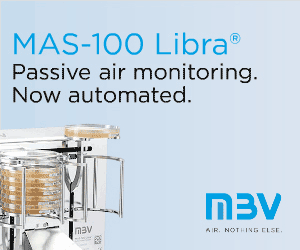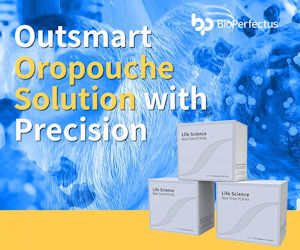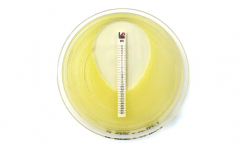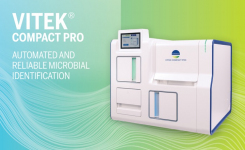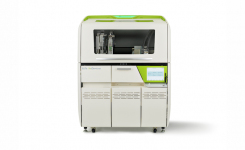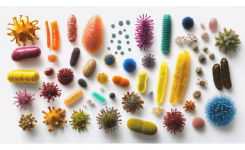DiaSorin has further strengthened its range of infectious disease diagnostic assays for use on the DiaSorin Liaison® Iam analyser with the launch of Iam HSV. This new molecular assay provides rapid and reliable differential detection of herpes simplex virus types 1 and 2 (HSV-1 and HSV-2) in human cerebrospinal fluid (CSF), vesicle swabs, plasma and whole blood, making it of enormous value in the diagnosis of herpes simplex encephalitis and potentially severe HSV infections in transplant patients and other immunocompromised individuals. Together with Iam VZV for the detection of clinically relevant subtypes of Varicella Zoster Virus (VZV), these assays provide valuable information for the timely treatment of severe alphaherpesvirus infections.
HSV-1 is an important cause of fatal sporadic encephalitis, although HSV-2 is more commonly associated with herpes simplex encephalitis in neonates and immunosuppressed individuals1. Early diagnosis and treatment are important to reduce and prevent neurological damage1. In transplant patients and other immunocompromised hosts, HSV may cause severe infections, frequently disseminating to the visceral organs, and can be life or organ threatening2.
Nucleic acid tests are the method of choice for the diagnosis and characterisation of HSV infection3,4, following baseline serology, offering greater sensitivity than viral culture4. Furthermore, molecular detection of HSV DNA in CSF is recommended for the diagnosis of herpes simplex encephalitis1. The ability to differentiate between HSV types can provide important prognostic information, particularly in the diagnosis of genital herpes4,5.
“Both HSV and VZV pose a significant threat to transplant patients and immunocompromised individuals,” comments Paul Eros, Global Vice President Molecular, DiaSorin. “Iam HSV and Iam VZV are therefore important additions to the wide range of serology and molecular assays available from DiaSorin for the detection of infectious diseases. Offering excellent specificity and sensitivity, they provide rapid confirmation of viral DNA in the patient sample for a swift diagnosis and early administration of appropriate therapy.”
Like HSV, VZV is the cause of significant morbidity and mortality in transplant patients and other immunocompromised individuals6,7. Immunocompromised children, particularly those with leukemia, are reported to be at risk of visceral complications and even death following VZV infection7. Complications occur in about 20% of VZV infected immunocompromised patients and include interstitial or necrotising pneumonia, viral hepatitis with acute liver failure, coagulopathies and bacterial superinfections7.
Based on the innovative DiaSorin Q-LAMP technology, Iam HSV and Iam VZV are part of a rapidly expanding portfolio of infectious disease assays for use on the DiaSorin Liaison® Iam analyser. Offering excellent diagnostic sensitivity (>95% for Iam VZV8 and >98.5% for Iam HSV9) and specificity (100% for Iam VZV8 and 100% for Iam HSV8), and with faster time to results than conventional real-time PCR, they provide rapid and accurate molecular confirmation of alphaherpesvirus infections. Furthermore, the small footprint, ease of use and scalable design of the benchtop Liaison® Iam Molecular Instrument makes it ideal for use in laboratory facilities of all sizes, including those that are located close to the patient.
The Iam HSV and Iam VZV assays are CE marked in accordance to IVD Medical Device Directive 98/79 CE. These kits are available for use outside of the USA and Canada only.
For more information about Iam HSV and Iam VZV, the Liaison® Iam instrument and the full DiaSorin molecular diagnostics infectious disease portfolio (including assays for BK virus, Toxoplasma gondii and Parvovirus B19), email info@ie.diasorin.com or visit www.diasorin.com
References
- Recent issues in herpes simplex encephalitis. Kennedy P & Steiner I. J Neurovirol. 2013 Aug;19(4):346-50.
- Varicella Zoster Virus (VZV) and Herpes Simplex Virus (HSV) in Solid Organ Transplant Patients. Zuckermana, R. A., and Limayec, A. P. American Journal of Transplantation 2013; 13: 55–66.
- Management of neonatal herpes simplex virus infection and exposure. Pinninti S & Kimberlin D. Arch Dis Child Fetal Neonatal Ed. 2014 May;99(3):F240-4.
- Sexually Transmitted Infections: UK National Screening and Testing Guidelines, August 2006.
- Guidelines for the laboratory diagnosis of genital herpes in eastern European countries. Domelka M et al., Euro Surveill. 2010;15(44)
- Varicella-zoster virus. Whitley R. In Mandell GL, Bennett JE, Dolin, eds. Mandell, Douglas and Bennett’s Principles and Practice of Infectious Diseases, 4th edition, Vol.2. New York, NY: Churchill Livingstone; 1995: 1345-1351.
- Varicella-zoster virus infections in immunocompromised patients – a single centre 6-years analysis. Wiegering et al., BioMed Central paediatrics. 2011 May; 11:31
- DiaSorin Iam VZV Instructions for use. VZV-529-02,EN 12/12
- DiaSorin Iam HSV Instructions for use. HSV-610-01,EN 04/14
- Loop-mediated isothermal amplification of DNA. Notomi et al., Nucleic Acids Research, 28(12); Jun 15, 2000
- Applications of loop-mediated isothermal DNA amplification. Fu et al., Applied Biochemistry and Biotechnology. 2011 Apr;163(7):845-50
- Management of herpes zoster and post-herpetic neuralgia now and in the future. Whitley et al.,Journal of Clinical Virology, Supplement 1, May 2010:S20-8
- Royal College of Obstetricians and Gynaecologists. Green-top Guideline No. 13 September 2007.


